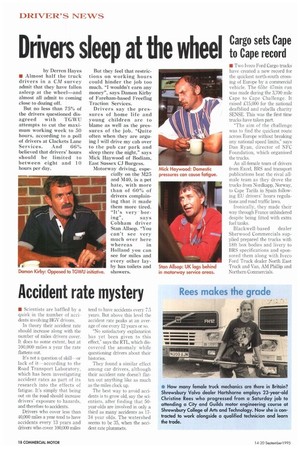Accident rate mystery
Page 20

If you've noticed an error in this article please click here to report it so we can fix it.
• Scientists are baffled by a quirk in the number of accidents involving HGV drivers.
In theory their accident rate should increase along with the number of miles drivers cover. It does to some extent, but at 100,000 miles a year the rate flattens out.
It's not a question of skill—or lack of it—according to the Road Transport Laboratory, which has been investigating accident rates as part of its research into the effects of fatigue. It's simply that being out on the road should increase drivers' exposure to hazards, and therefore to accidents.
Drivers who cover less than 40,000 miles a year tend to have accidents every 13 years and drivers who cover 100,000 miles tend to have accidents every 7.5 years. But above this level the accident rate peaks at an average of one every 12 years or so.
"No satisfactory explanation has yet been given to this effect," says the RTL, which discovered the anomaly while questioning drivers about their histories.
They found a similar effect among car drivers, although their accident rate doesn't flatten out anything like as much as the miles clock up.
The best way to avoid accidents is to grow old, say the scientists, after finding that 50year-olds are involved in only a third as many accidents as 1734 year olds. The watershed seems to be 35, when the accident rate plummets.
















































































































